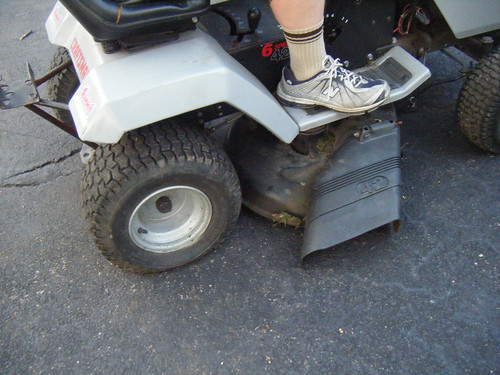 Lawn care season is back, therefore homeowners need to protect their feet and the feet of those around them when using rotary-blade lawnmowers.
Lawn care season is back, therefore homeowners need to protect their feet and the feet of those around them when using rotary-blade lawnmowers.Each year, some 25,000 Americans sustain injuries from power mowers, according to reports issued by the U.S. Consumer Products Safety Commission. “The blades whirl at 3,000 revolutions per minute and produce three times the kinetic energy of a .357 handgun. Yet, each year we continue to see patients who have been hurt while operating a lawnmower barefoot.
Children under the age of 14 and adults over the age of 44 are more likely to be injured from mowers than others. Anyone who operates a power mower needs to take the few simple precautions listed below:
- Don’t mow a wet lawn. Losing control from slipping on rain-soaked grass is the leading cause of foot injuries caused by power mowers.
- Wear heavy shoes or work boots when mowing – no sneakers or sandals.
- Don’t allow small children to ride on the lap of an adult on a lawn tractor. Children can be severely injured by the blades when getting on or off the machine.
- Mow across slopes, never go up or down.
- Never pull a running mower backwards.
- Keep children away from the lawn when mowing.
- Keep the clip bag attached when operating a power mower to prevent projectile injuries.
- Use a mower with a release mechanism on the handle that automatically shuts it off when the hands let go.
If a mower accident occurs, immediate treatment is necessary to flush the wound thoroughly and apply antibiotics to prevent infection. Superficial wounds can be treated on an outpatient basis, but more serious injuries usually require surgical intervention to repair tendon damage, deep clean the wound and suture it. Tendons severed in lawnmower accidents generally can be surgically reattached unless toes have been amputated.
If you or someone you know has fallen victim to a lawnmower, please contact our office immediately for an appointment, 440-946-5858.

